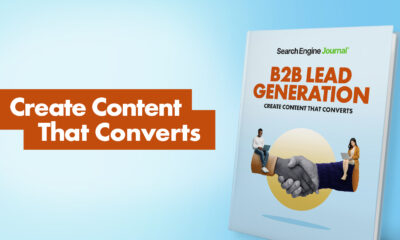B2B marketing is a dance between the marketer and the customer.
The decision to buy is never easy, so the marketer must cater to the potential purchaser’s desire for more information, providing it until the right moment comes to convert the prospect into a customer.
But technology will not play the same tune this year. The tempo has changed. The music is different. And the dance steps are faster.
The marketer and customer once did the tango. Now they are doing the twist.
Yesterday’s waltz
Things that used to work are being discarded. “Traditional sales calls are fading into the background,” said Lisa Ohman, COO of SEO solution Ubersuggest. Affiliate programs might drive sales with just five to 10 percent of membership. “The rest is noise and overhead,” she said.
“As with any industry, tactics and techniques fall in and out of favor.” Said Dennis Shiao, founder of B2B agency Attention Retention
“Five to seven years ago, two of the trendiest tactics for B2B marketers were infographics and SlideShare…These days, marketers still create infographics, but not nearly as frequently as before. SlideShare seems to have become irrelevant, sadly.” Shiao said. The first infographic got a lot of attention, but a single infographic today is hardly noticed in a flood of many.
“The lack of results is a big reason why tactics fall out of favor,” Shiao said. “Tactics that continue to produce results do not fall out of favor. One example might be well-written, longform blog posts, though achieving success with these is more challenging today than it was in the past.”
“The ebb and flow of channels and tactics are strange; they go up and down, yet rarely ever die” said John Wall is a partner at analytics firm Trust Insights. “Digital ads are getting less effective as privacy has become a higher concern,” he said, “and prices going up at the same time.”
Read next: Why we care about B2B marketing
Today’s whole shack shimmy
It would be cynical to say that new technology merely empowers one to do the same old thing in a new way. The cow path is paved with such gold bricks of foolishness. The challenge is on the marketer to figure out how to find a way to use new technology that plays to future strengths. Take video.
“I’d use a broader term for the category, which is ‘multimedia,’” Shiao said. “It encompasses slide-based webinars, audio podcasts, application screen shares and more… multimedia content should complement written content… For me, however, the sweet-spot combination is a high-quality written article with YouTube or Vimeo videos embedded adjacent to the copy.”
“We’ve found that for many organizations written content is most common early in the buying process and video is closer to the moment of purchase and used for post purchase, but this is different for every product.” Wall added.
Written content is great when someone is looking for information, but video can explain value, Ohman said. “I don’t need the article. Show me.”
Social media is another avenue of approach, but it must be more than being a place to dump content.
Ohman sees an opportunity to take social media to the next level. “Don’t talk about yourself. Get someone else to talk about you.” Here creative partnerships come in handy as “people are looking for social proof.”
“LinkedIn is always our first choice for B2B.” Wall said. “The fact that it’s business first, and there are paying customers who are doing recruiting [there], makes it an entirely different thing than social networks that are built around only advertising, which then creates incentive for clickbait and other sensationalism.”
“While B2B companies need to claim their brand handles and have a presence on the major platforms, start by picking one or two to focus on.” Shiao said. “On Twitter, a tactic I found successful is finding Twitter chats in your industry. A Twitter chat happens on a specific day and time (around a particular hashtag) and usually lasts for an hour. Participate in the chat from your brand’s Twitter handle. Relative to all your other Twitter activity, the engagement from these chats can go through the roof.”
Get the daily newsletter digital marketers rely on.
Learning new steps without missing the beat
So what can B2B marketers do? Despite all the change, marketing fundamentals remain the cornerstone of practice.
“Adopting new technologies is always a challenge, on one hand you have to learn how to effectively publish on the new platform…and then you have to have marketers who can effectively communicate through copywriting and compelling content, which is an art in itself.” Wall said. “For B2B marketers, do everything you can on the product marketing side. This will give your content more credibility, and help you better communicate value.”
“Get back to the basics, which has nothing to do with a change in thinking or a new technology. It’s about understanding your target audience.” Shiao said. “I often say that my wife knows me better than I do. B2B marketers should strive to know their audience better than they do. This comes from studying and observing them and it also requires engaging with them (e.g., having meaningful conversations). If you know your audience better than they do – or even if you know them as well as they do – your content and campaigns will be all the more effective.”
People struggle with new technology and the change it brings. If a current technique is producing conversions at two percent, why risk a new technology that can produce a five percent conversion — or zero? Sometimes it pays to try a manual technique on a smaller scale to produce and measure change, then understand how the customer used that new information in their journey to purchase.
Ohman related best practice this way:
- Personalization. “Be scrappy about it.”
- Encourage your people in lead generation and sales support to bring in the human experience.
- Drive value. Even if you provide value at the risk of “sharing the secret sauce”, do it anyway. It may unlock new levels of opportunity.
- Data. Data. Data. Data. Data. The more you find useful, the better.










![A Simple Guide to B2B Social Media Marketing [Infographic] A Simple Guide to B2B Social Media Marketing [Infographic]](https://articles.entireweb.com/wp-content/uploads/2024/01/1704336964_A-Simple-Guide-to-B2B-Social-Media-Marketing-Infographic-400x240.jpg)
![A Simple Guide to B2B Social Media Marketing [Infographic] A Simple Guide to B2B Social Media Marketing [Infographic]](https://articles.entireweb.com/wp-content/uploads/2024/01/1704336964_A-Simple-Guide-to-B2B-Social-Media-Marketing-Infographic-80x80.jpg)



![5 Psychological Tactics to Write Better Emails → Download Now: The Beginner's Guide to Email Marketing [Free Ebook]](https://articles.entireweb.com/wp-content/uploads/2023/02/11-Free-Email-Hacks-to-Step-Up-Your-Productivity.png)





















You must be logged in to post a comment Login